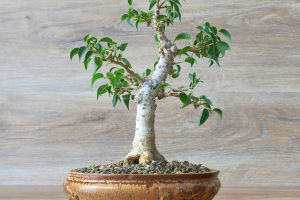Indoor Greenery
Indoor green plants are not only aesthetically pleasing but also offer numerous health benefits. What are the scientific reasons behind this phenomenon?
In recent years, the trend of indoor plant cultivation has become increasingly popular. Particularly during the COVID-19 lockdown, many people sought to improve their indoor environment, bringing a touch of nature inside. As a result, the global sales of indoor plants have surged dramatically.
Several research studies have provided insights into the health benefits of indoor greenery. For instance, a study conducted in the Netherlands found that in less affluent suburbs where there are more green plants in the surrounding environment, children with attention deficit hyperactivity disorder (ADHD) tend to use less medication such as methylphenidate.
Moreover, children with ADHD exhibited higher levels of concentration after walking in parks compared to walking in residential areas or city centers, leading to a 10% reduction in the use of ADHD medication. Similar research in California, USA, also indicated that planting dense trees is beneficial for schoolchildren growing up in densely populated areas, reducing the risk of autism spectrum disorder.
Furthermore, research has shown that people who move to areas with better greenery experience long-term improvements in their mental health.
Living in a green environment promotes a sense of calmness, faster attention restoration, and overall improved mood. An experiment involving identical twins in the United States demonstrated a negative correlation between green environments and the occurrence of depressive symptoms.Even observing a large number of green plants at home is associated with lower levels of the stress hormone cortisol, leading to increased happiness. Additionally, early-life exposure to green environments continues to have positive effects on the elderly, delaying cognitive decline in old age.
Living in a green environment helps reduce the risk of cardiovascular diseases, depression, anxiety, and other stress-related illnesses.
Residents living in environments with more greenery or natural elements such as plants and water experience lower probabilities of anxiety disorders. A study in Toronto, Canada, revealed that residents living in communities with higher tree density not only feel healthier but also have significantly reduced rates of cardiovascular diseases.Increasing the number of trees in each city block delays the onset of age-related health problems by an average of seven years. Particularly, children, the elderly, and socioeconomically disadvantaged groups, who may find it inconvenient or less likely to seek nature in distant places, benefit more from the green plants surrounding their residential areas.
The presence of indoor green plants is closely related to urban health.
Placing indoor plants helps purify the air, reducing concentrations of carbon dioxide and volatile organic compounds, thereby maintaining fresh and healthy indoor air. The transpiration process of indoor plants humidifies the air, reducing the occurrence of headaches and enhancing attention.Incorporating plant green walls and green roofs in building design enhances thermal insulation, reducing heating and cooling costs.
Developing parks, green spaces, and planting various types of green plants in residential areas and surrounding areas not only absorbs summer heat radiation and lowers surrounding temperatures but also relies on "green landscapes" to reduce people's stress levels, encouraging them to spend more time outdoors socializing and exercising, thereby fostering a better social atmosphere.


